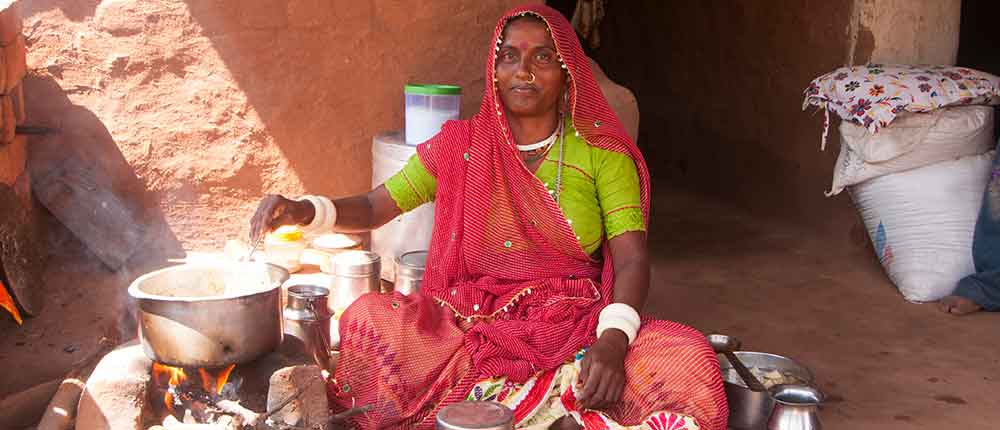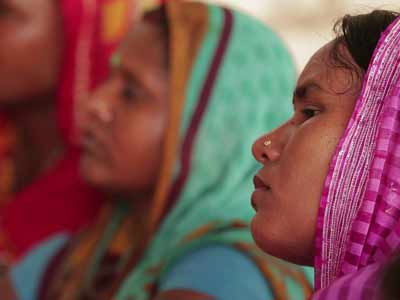Providing LPG is necessary but not sufficient. The government needs to adopt supplementary measures to incentivize higher utilization of LPG to succeed in its objective of providing clean fuel.

To comply with Sustainable Development Goal 7 (SDG 7), India needs to provide access to affordable, reliable, sustainable, and modern energy (both cooking and lighting) to all households by 2030. While in April 2018 India has achieved 100% village electrification, 99.99% households were also electrified (only 18,734 households are still to be get electricity connection) till March 2019. But, the scenario in the case of cooking fuel is not so satisfactory. Percentage of households using clean cooking fuel is an indicator of SDG 7 as decided by the Ministry of Statistics and Programme Implementation (MoSPI). As per SDG India dashboard, by the end of 2018, only 43% households had access to clean cooking fuel. According to 2011 census, only 11% rural households used LPG as primary cooking fuel. Thus, majority of the rural households use non-clean solid fuel (firewood, cow dung, and crop residue) as primary cooking fuel while most of them use traditional cookstoves for cooking. Most of these households are poor/BPL. Using solid fuel in traditional cookstoves has significant health and environmental hazards. It leads to indoor air pollution which is the second highest (after high blood pressure) killer in India. In 2010, indoor air pollution caused two premature deaths every minute and 1.2 lakh premature deaths in 2015. Only the use of clean cooking fuel can help the households (especially female members) to get rid of such health issues.
In this background, Pradhan Mantri Ujjwala Yojana (PMUY) was introduced in May 2016 by the Government of India with a target of providing 5 crore LPG connections to BPL households by 2019. The initial target was revised later to provide 8 crore LPG connections by 2020. This scheme is supposed to create 1 lakh employments and business opportunities of 10,000 crore in the next three years other than empowerment of rural women and boosting of ‘Make in India’ campaign. Under PMUY, BPL households are eligible to get a free LPG connection in the name of any adult female household member but the beneficiaries have to arrange for subsequent refills. Bulk procurement and provision of reasonable government budget for PMUY reduced the cost of an LPG connection to ₹3,200 from ₹4,500– ₹5,000. Even half of this ₹3,200 has been considered as one-time grant from the government under PMUY. Moreover, the household could get a loan from the oil marketing companies, in case it is unable to afford the remaining ₹1,600 initial connection cost. Thus, a BPL household can access LPG connection even without paying a single rupee in the beginning. The repayment of the interest-free loan was deducted from the subsidy of consecutive refilled-cylinders. Here the challenge arises for the beneficiary households. While the initial cost of LPG connection is addressed in the scheme, they need to arrange refill of cylinders which cost around ₹712 (Delhi) for a 14.2-kg cylinder (within per household annual limit of 12 refills). Unless the household opts for voluntarily give-up of LPG subsidy, ₹215 are transferred to the subscriber’s bank account under the Direct Benefit Transfer (DBT) scheme. However, arranging ₹700+ for each refill is a real challenge for most of the BPL households and this leads to ‘stacking’ of cooking fuels and low utilization of LPG. The key reason for less refill or lower utilization is due to the affordability and availability of solid fuels compared to LPG. While the household has to pay significant amount for refilling a cylinder, the solid fuels they use is almost free (through collection from nearby forest areas or crop residue or cow-dung as byproduct of household activities).
Otherwise, they can purchase small amounts of solid fuels at regular intervals as per their requirement and affordability. However, food habits and cooking habits also play significant role in utilization of cooking fuels. Lack of sufficient LPG distribution centres and resulting long waiting time for refill aggravates the problem of affordability issue of LPG refill. Between April 2016 and January 2018, the total number of active LPG consumers increased by 31%, while total number of distributors went up by 9%. As per a recent report, 90% of Ujjwala beneficiaries still use solid fuels for cooking (Times of India, May 2, 2019).
As per another report,1 while 56%of Indian households had access to LPG in 2016, access has significantly increased to 80% at the end of 2018. However, based on primary survey of six major energy access deprived states, the Council on Energy, Environment, and Water (CEEW) concluded that households using LPG as their primary cooking fuel increased only from 14% to 37% between 2015 and 2018 (CEEW, May 2019). Moreover, in January 2018, India had 3.82 crore inactive LPG connections, almost same as the total number of LPG connections distributed under PMUY scheme.
As per latest statistics, the government achieved its target of providing 8 crore connections on September 7, 2019. While the government had a target of 2 crore PMUY connections every year, 3.62 crore PMUY connections were released only in 2018-19 (1.56 crore in 2017-18). As part of its 100-day agenda, the government achieved the revised target of providing 8 crore PMUY connections by August 2019 while the targeted timeline was May 2020. Till date, 1.44 crore PMUY connections were released in Uttar Pradesh followed by 87 lakh in West Bengal and 84 lakh in Bihar.2
As per the PMUY website,3 the average annual refill under PMUY is as low as three cylinders while the national average is approximately seven refills per year. There are 12 states (including Kerala and Tamil Nadu) where average annual refill under this scheme is as low as two. Moreover, 25% of the connections released under PMUY till December 2018 does not make any refill till June 2019. Other than this large number of completely inactive beneficiaries, there are another 18% who marginally use the LPG connection (less than three cylinders). Thus, approximately 42% of the scheme beneficiaries failed to use their LPG connection in an expected manner. Chhattisgarh (69%) and Jharkhand (63%) are the two states where more than 60% of the scheme beneficiaries remain fully or partly inactive. To address this lower usage of LPG, oil firms are offering smaller 5 kg cylinder in place of the traditional 14.2 kg cylinder. These smaller cylinders are expected to reduce the pressure on beneficiaries for refill as it will cost around ₹260 including the subsidy of which ₹80 will get credited to the bank account directly. The Ministry has also instructed the oil marketing companies to improve the quality of service and delivery for better penetration of LPG and promote higher usage of LPG. It is expected that these measures will increase usage of LPG in PMUY beneficiary households. Providing LPG is necessary but not sufficient measure. Mere provision of LPG without proper utilization is as ineffective as just providing electricity in household without proper and reliable supply. Thus, it is also the responsibility of the government to adopt supplementary measures to incentivize higher utilization of LPG. Only then, the actual objective of providing clean fuel will be successful.
References:
1. https://smartinvestor.business-standard.com/pf/ loans-581321-loansdet-Ujjwala_scheme_boosts_India's_LPG_consumption_to_a_record_high_in_FY19.htm#.XYSWDi4zbIU
2. PMUY Website, last accessed on August 22, 2019
3. last accessed on August 22, 2019
(The article first appeared in the October 2019 issue of TerraGreen)

